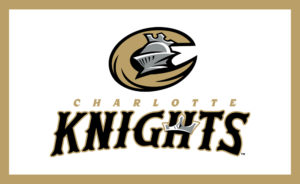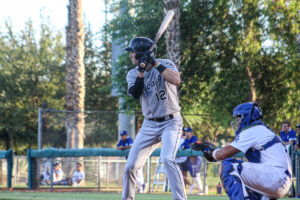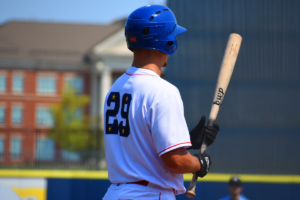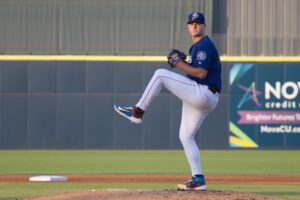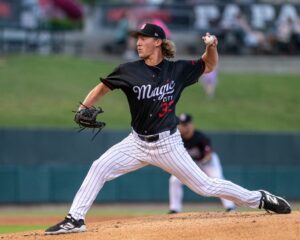The Kannapolis Piranhas?
The Intimidators are, as of this writing, in first place with a 13-6 overall record to start the 2018 campaign. Part of their success thus far is a lineup that, while lacking star prospect power, also lacks clear holes. The starting nine are all players with enough tools and skills to keep them in the prospect discussion, even if most are on the edge of the radar. The formula works and makes for a fun team to watch.
White Sox fans who’ve been around a bit may remember Manager Ozzie Guillen referring to the Sox’ nemesis Minnesota Twins’ hitters as piranhas, for their way of gnawing away at the competition with a thousand little bites. This ballclub may carry the name Intimidators in reference to one talented competitor, but the phalanx of bats they present their opponents could be better described as scary en masse.
The below reports are based on my multi-game viewing, as well as chatting with scouts, coaches and the players. Instead of featuring one or two prospects deeply, I’m going to write up all nine of the everyday starters in shorter snippets (some shorter than others) with video and a few quotes. Here’s a little over two thousand words about the Kannapolis Intimidators lineup that you didn’t know you needed, but might put you in a good mood about the White Sox’ future if you finish them.
Luis Gonzalez
Ranked 22nd overall, Gonzalez is the only player on this club that is among the Top 30 Prospects in the organization. As such I was excited to see him play, and he does stand out a bit from the crowd. Not just due to specific on-field performance, but an added list of “little things” that complete the package.
He oozes confidence. Here’s what he told me about his near term goals:
I want to finish of the year in AA, somewhere high. Get myself in good position to be in the big leagues by next year. Other than that, just staying within myself, staying consistent at the plate and putting up good numbers. I want to hit .300, and just let the home runs come. But also just have fun with the game and let it come to me.
On the base paths he’s a pest, harassing pitchers, taking extra bases and generally making his presence known. On defense he takes routes more mature than most you see at this level. Probably related, he spent far more time in the outfield during BP actively tracking and catching balls than I usually see. I try to avoid breaking out scouting tropes, but here it just applies – he “looks like” a major leaguer.
At the plate, he’s got a relaxed set with a bat wag, and the swing is clean and well-leveraged. Here’s a quick one-swing video from the open side to give perspective (I tried to get Jirschele out of the shot but he wouldn’t listen to me):
Gonzalez isn’t noted for his power, but in BP he launched a few out, including one particularly long bomb. His swing is quick, and while I’d like to see more before putting a grade on it, I’m comfortable with at least average raw. In terms of speed, I wasn’t able to time a jail break, but I got him around 4.3 home to first when he dug hard for two thirds then slowed up the last third. He’s somewhere above average at least given the context. Here’s an infield hit video showing that play:
In terms of plate approach he typically worked long counts, laying off the right pitches. And that was when his overall numbers weren’t showing well. The arm is above average or plus – he pitched in college so this isn’t a surprise. Gonzalez doesn’t have an elite classic tool, but he seems likely for average or better ceiling on all of them, with a few that could reach plus. Success with the hit tool (and any power projection) likely dictate his future, but as I said earlier, he looks like a major leaguer.
Justin Yurchak
After a strong showing in the Pioneer League as a 20-year-old, I was excited to see what Yurchak brought at the plate. He and the next batter I will cover were the last two off our most recent top thirty list. But it was defense that was at the top of my list of questions; specifically, whether he was going to be playing third or first going forward. His answer:
I think it’s first. I’m more than willing to play wherever they need me. But right now it’s first base.
The offensive bar is generally higher for first basemen, so, what does Yurchak bring to the plate? An open, relaxed stance, and long counts. It’s clear how it is this 12th round pick managed to draw more walks than strikeouts both in college and his pro debut. The swing is consistent, without any extra load noise or the like. In BP he was stroking consistent line drives, mostly gap to gap, with ease. But in game his swing was more tentative, and that shows in the results he got for the first week of games in A-ball. I get the impression from later looks by other evaluators that he was perhaps just a bit tight those first few games, as he’s done much better since. Here’s the one in-game video I got where he put the ball in play (sorry I wasn’t able to grab better tape on Justin):
In terms of projection, the plate discipline will certainly play in his favor, and based on my own and others’ views I feel confident he’ll also hit for average. But what about the other tools? He hasn’t shown much power yet, and the swing and approach aren’t terribly conducive to it. Speed is below average. I didn’t get to see him play much 1B, but let’s give him the benefit of the doubt as a former college shortstop and third baseman that he’ll handle that just fine. Yurchak’s future (assuming he’s a first baseman) ultimately comes down to whether or not the power can develop to go along with the batting eye and hit tool.
Evan Skoug
Libertyville, Illinois native and TCU product Evan Skoug was another player I wanted to get a good look at. He was drafted last year and signed over-slot based heavily on plus raw power grades. And in BP, he certainly showed some of that, sending loud cracks around the park.
At the plate, Evan had a lot of little things going on mechanically, that one might call noise. It seems that could be giving him trouble in getting around quick enough, which might explain the high K-rates thus far in his pro career. But it also could be that it is something he is adding intentionally for right now, as he had this to say about his approach this year and trying to be less tight at the plate:
Right now I’m just starting to figure a couple things out, and really starting to focus in on my tension. The more tense I am before the pitch comes, the more chances I swing and miss, or I speed myself up and swing at a bad pitch.
Here’s an open side view of his approach and swing:
And a video of one of his at-bats from behind home plate, where he couldn’t dial in against a pitcher throwing a fair amount of junk:
Of course for catchers, a lot of the keys are around how they do behind the plate. Important for context: very few catchers look great in their first full pro season. Skoug has work to do defensively. He had some trouble blocking pitches. It is probably too early to make much judgment on defense, except to say that he, like most bat-first drafted catchers in their first full year, will need some time to develop. He’s also obviously working on plate approach on the hitting side. Expectations should be that Skoug will move up the ladder slowly, at least in the near term.
Craig Dedelow
We’ve now reached the prospects that some might refer to as “fringe” or “off the radar” types. But what I saw from Craig Dedelow hinted at potential for more. Given his reputation for plus power from a corner outfielder, I was expecting a thickly-built prototypical slugger, but Craig has a very athletic frame that is almost slender for a power guy. He’s also got some speed – see this video of a jail break to first that ended in a mild collision with the first baseman, where he recorded around 4.15 from the left side which is above average speed:
You also get somewhat of a look at his swing there. Another surprise was that, while Dedelow’s swing did have some length to it (he is 6’4”), it wasn’t a typical slugger’s look. He adjusts well pitch to pitch and hits a fair number of line drives the other way, while other times leveraging into the pull stroke. Defensively he seemed competent in left, has plenty of arm for any slot. He’s played center before, but not this year and I’m not sure he’d get a chance given some of the true CF’s already in the system.
The power was there in BP, but it was the rest of the package that caught my attention. It would be easy to miss him among the plethora of A-ball outfield talent. Just don’t be shocked if he finds his way into that discussion in the next year or two.
Laz Rivera
Selected in the 28th round from a D-II program last June and assigned to the AZL as a 22-year-old, I’m not sure anyone – even within the White Sox – really expected him to do what he’s done so far. Not only have his hitting results been strong as a pro, but multiple reports of excited surprise from scouting types have filtered through. So, is Laz Rivera a prospect or a mirage?
Watching Rivera hit it became clear how he’s maintained such a high contact rate. He’s got a quiet setup, a short, quick stroke, and he adjusts mid-pitch in a way more mature than is typical for this level. I saw him add and take away swing speed in at-bats more than just waving at offspeeds. I don’t think there’s a lot of raw power in there, but he doesn’t completely lack pop either. Here are a pair of videos, one of him slicing an outside pitch to right for a single, and another chopping one into the short-third hole for a hit:
What may not be as clear from the video is, Laz is quite aggressive at the plate. Not surprisingly his walk rates have been quite low. The very high contact rate and very low walk rate pairing likely isn’t sustainable as he moves up, so some patience and selectivity will be needed if he is to succeed at higher levels.
Defensively I was impressed by Rivera’s overall play at third (one game) and short (one game). Footwork, instincts and hands all seem natural at either position. He’s got enough arm to play either one, though for third base he’d probably be below average in arm strength. I timed Laz out to be an above average runner, and he does (like a number of his teammates) like to be a pest on the bases. Higher level pitching will tease things out in the next couple years, but for now, he’s certainly a guy to watch and I can see a future utility infielder role being in reach.
Tyler Frost
Going into the season, it seemed unclear if Tyler Frost would even get a full season gig, what with the crowd of A-ball outfielders to contend with. But after a strong showing in the January hitters’ mini-camp among much more talked-about prospects, he was assigned to Kannapolis to open 2018. And there he has opened some eyes. He recently hit four home runs in a week and as of this writing has a cool 1.006 OPS. So who is this 15th-rounder?
A few tools stand out. First, he’s a plus runner. Here’s an open side video where he hits a single, then seeing an opportunity, hits a second gear on the way to 2nd to grab an extra base on a throw:
He gets the bat around quickly, and the pop off his bat is more than you’d expect from a 5’10” speed guy. But, as you can see above and I saw throughout the games, he’s got a hitch in his bat load where he brings his hands down and up before swinging. Even with a quick and relatively compact swing, that will eventually bite him if he doesn’t fix it. The high speed and some power combo is intriguing.
Frost’s best performance was on defense. He’s got the tools to play center and probably would be there more often if not for the presence of Gonzalez. He’s got very good range, seemed to track well, and has a big arm. I’d put a plus on his throwing tool without hesitation. As a total package, if he can get past the load noise, I can see a 4th outfielder future in play.
—-Quick shorthand bullets on a few other hitters I saw:
Tate Blackman
Very strong frame on this 13th round pick playing second base. Leveraged swing generates some good power and allows him to put a charge in the ball. Aggressive pitch selection and a swing geared for loft. Looks comfortable at second base. Here’s a video of him slicing a base hit to right field:
Johan Cruz
Loose and athletic infielder, strong arm that will play anywhere, but not as impressive glove and footwork. Will lace line drives in BP, but in games he had a lot of trouble swinging at the wrong pitches. Above average runner. Open side at-bat video:
Mike Hickman
Curious case. White Sox drafted him twice, 2016 and 2017, as a catcher. This year he’s among three backstops on the Kannapolis roster (which is an interesting choice), playing a mix of catcher, first and DH. I asked him what his long term position is, and he said this:
I’m probably gonna keep doing more than one. So in spring, I only caught. Then once the season started, I started playing both. So I’m not sure what’s going on, but I’m just rolling with it.
Relaxed kid who looks like he belongs, strong frame. Still on the young side for the league. Will put a charge into the ball, put on an impressive BP display. Swing is long and pull-oriented. Slightly above average speed grade will play well above average among catchers if he sticks there. I didn’t get to see him behind the plate. Here’s video of a base hit to right:
Want to know right away when we publish a new article? Type your email address in the box on the right-side bar (or at the bottom, if on a mobile device) and click the “create subscription” button. Our list is completely spam free, and you can opt out at any time.

